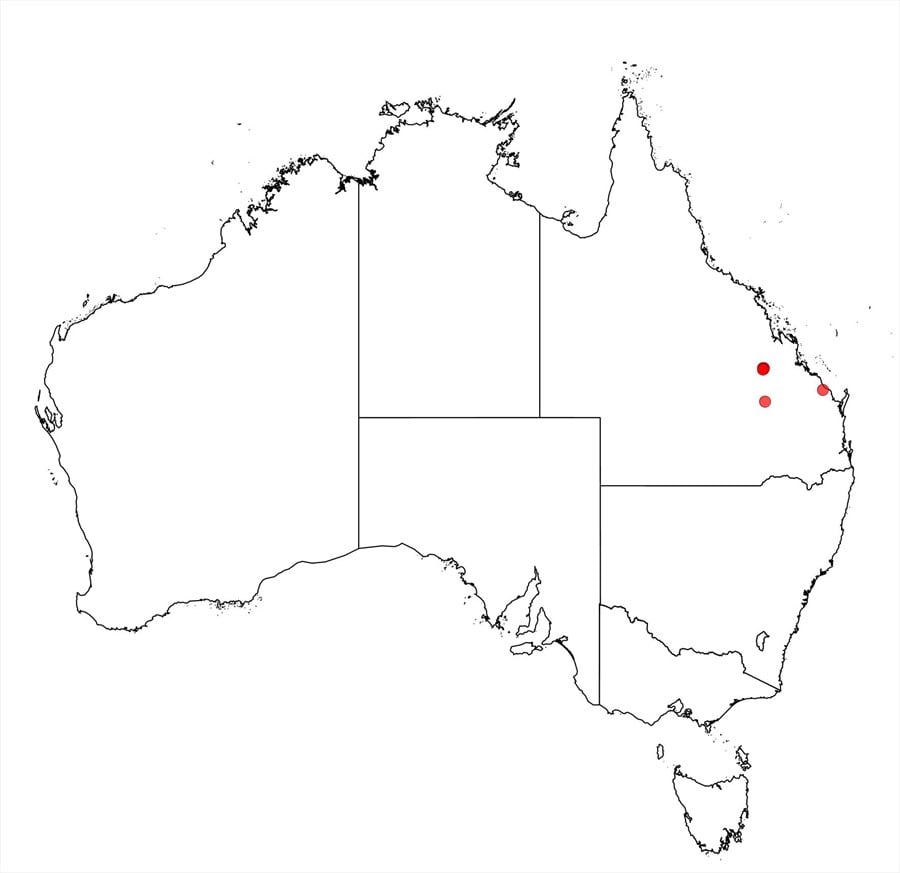Acacia neobrachycarpa I.M.Turner
WATTLE
Acacias of Australia
Family
Fabaceae
Distribution
Sporadic in south-eastern Qld from Blackdown Tableland to Stanthorpe.
Description
Compact much-branched shrub to 2 m high but usually much smaller. Branchlets sparsely to moderately hirsutellous. Stipules c. 1 mm long. Phyllodes scattered, some subverticillate, subsessile, patent, linear to linear-triangular, flat but often ±quadrangular when dry due to pronounced midrib on each face, 9–15 mm long, c. 1 mm wide, pungent, rigid, glabrous; gland obscure, 1.5–2.5 mm above base. Inflorescences simple, 1 per axil; peduncles 1.5–4 mm long, slender, glabrous, recurved in fruit; basal bracts 3; heads globular, small, 8–18-flowered, bright lemon yellow; bracteoles acuminate but not exserted beyond flowers in buds. Flowers 5-merous; sepals free, oblanceolate. Pods 8–20 mm long, 3–4 mm wide, acute, 1–3-seeded, firmly chartaceous, blackish, glabrous. Seeds (immature) longitudinal, oblong, 3.5 mm long, exarillate; funicle filiform.
Habitat
Grows in Eucalyptus open forest, normally on sandstone.
Specimens
Qld: Blackdown Tableland, 19 km SSE of Bluff, R.W.Johnson 1135A (BRI); Helidon Hills, M.Olsen 820 & B.Lebler (BRI); Stanthorpe, J.Westcott (BRI168021).
Notes
The name A. brachycarpa Saporta was described for a fossil-species from France, fide I.M.Turner (l.c.). A member of the ‘A. ulicifolia group’. Vegetatively similar to A. ulicifolia and A. brownii which have larger, creamy yellow or golden heads with more flowers, longer peduncles and longer pods with more seeds. Although A. neobrachycarpa is generally distributed further inland than A. ulicifolia, the two are sympatric at Crow’s Nest and on the Blackdown Tableland (fide L.Pedley, Austrobaileya 1: 238 (1979)). Unlike other members of the ‘A. ulicifolia group’ the seed of A. neobrachycarpa appears not to be mottled, but mature seeds have not been seen.
FOA Reference
Data derived from Flora of Australia Volumes 11A (2001), 11B (2001) and 12 (1998), products of ABRS, ©Commonwealth of Australia
Author
B.R.Maslin
This identification key and fact sheets are available as a mobile application:
URL: https://apps.lucidcentral.org/wattle/
© Copyright 2018. All rights reserved.
 Acacia neobrachycarpa occurrence map
Acacia neobrachycarpa occurrence map




